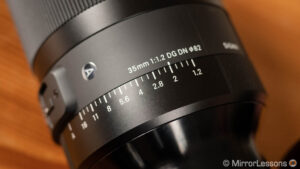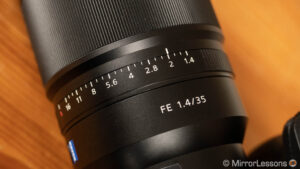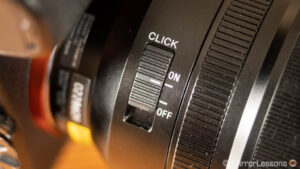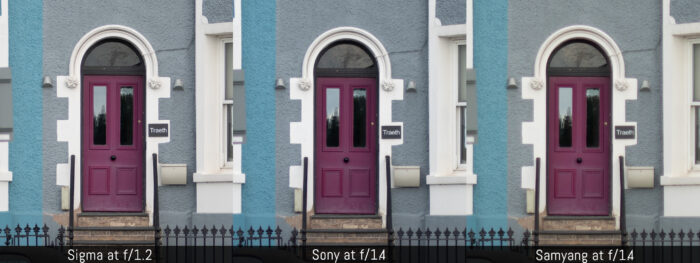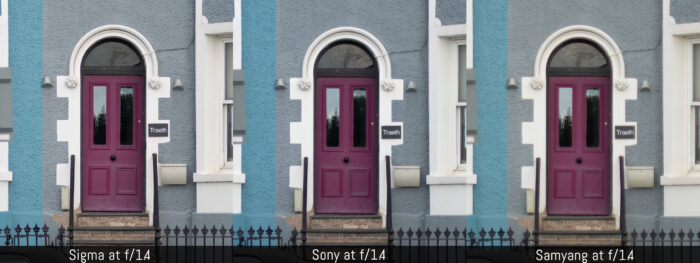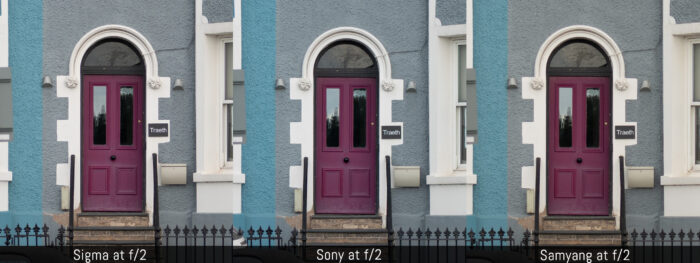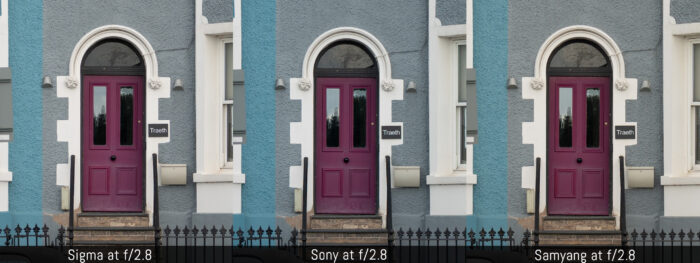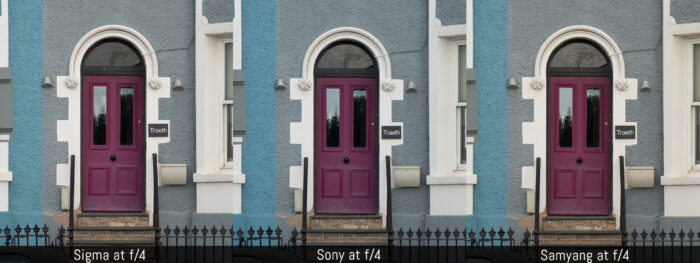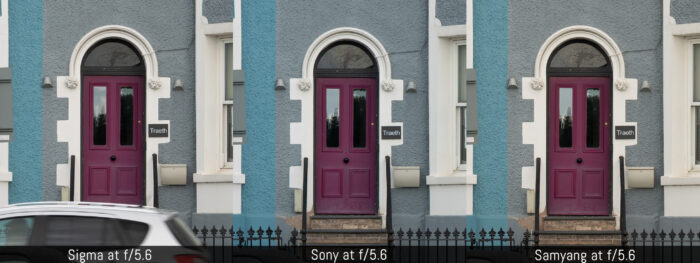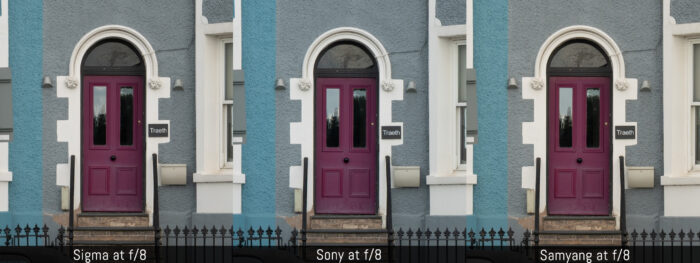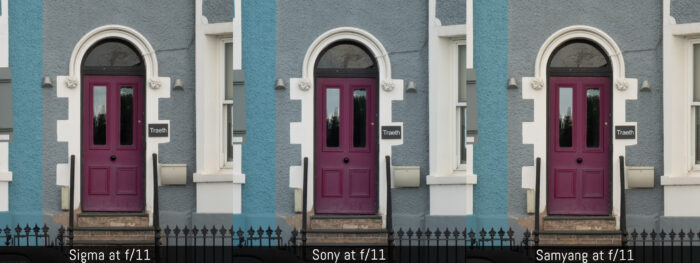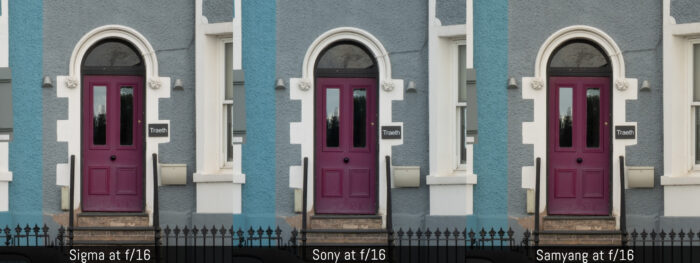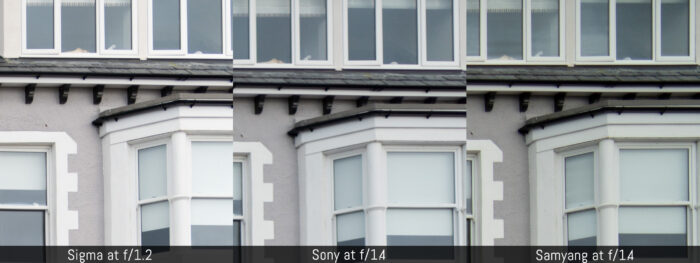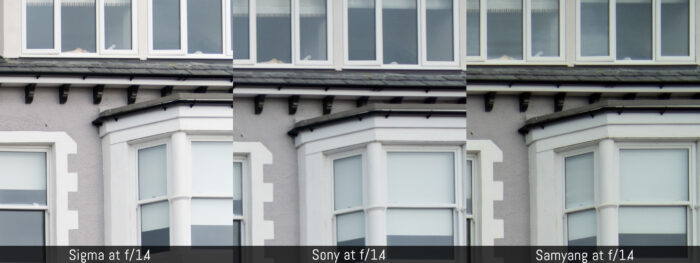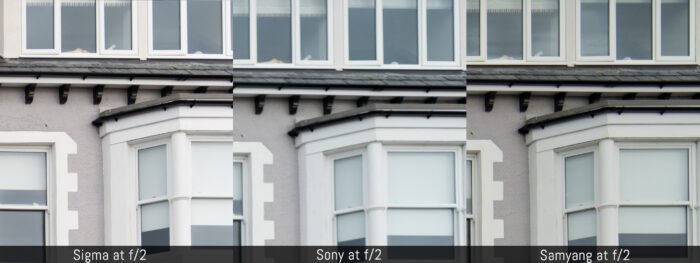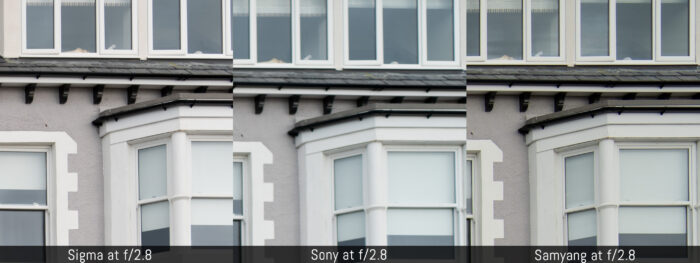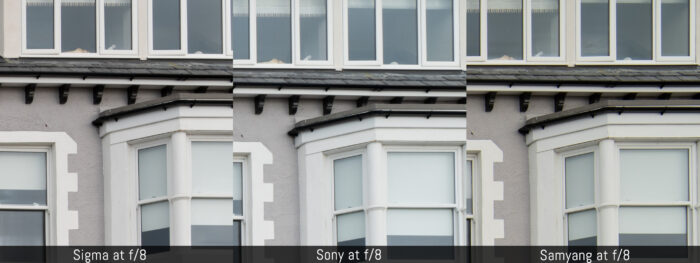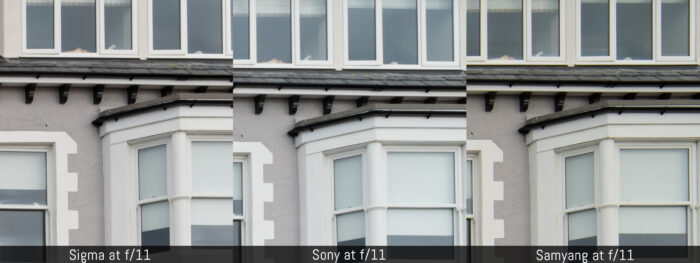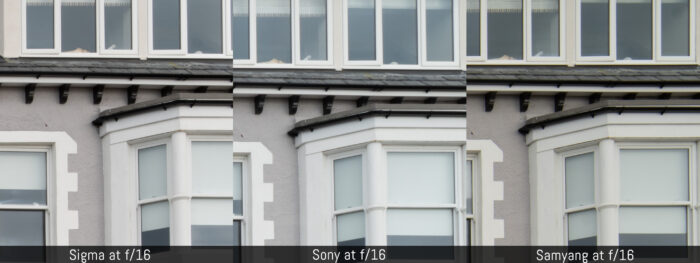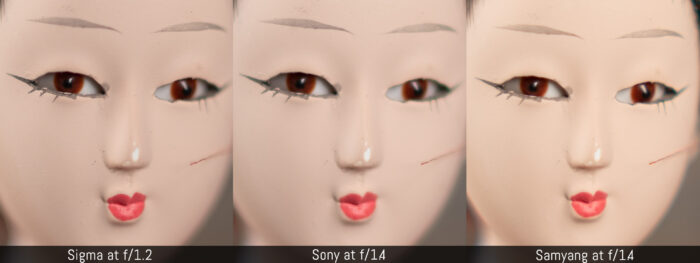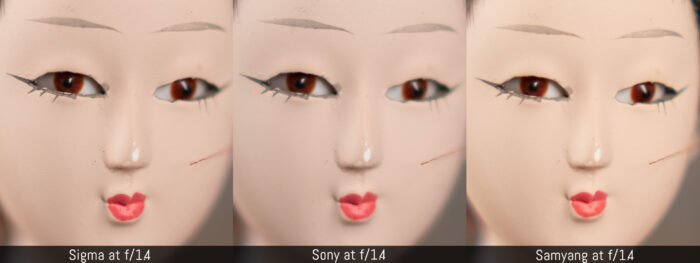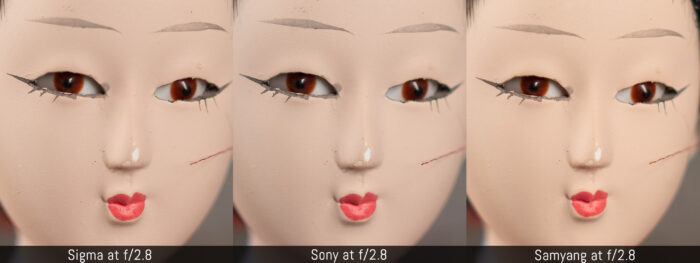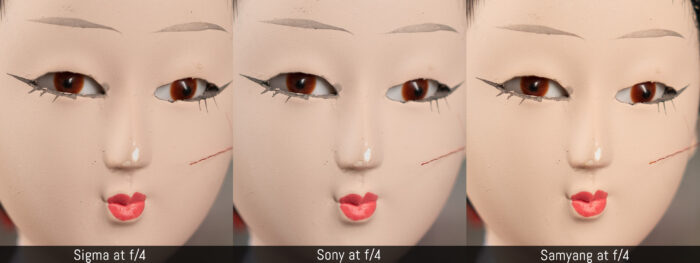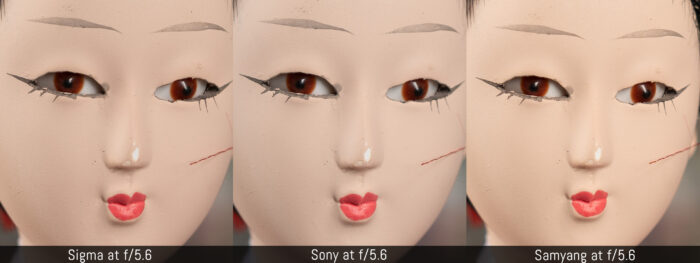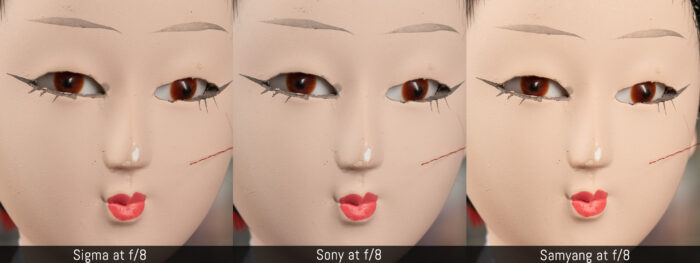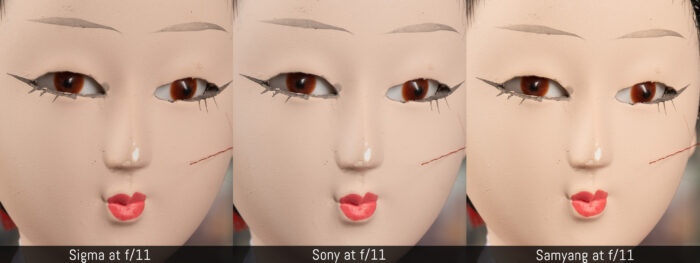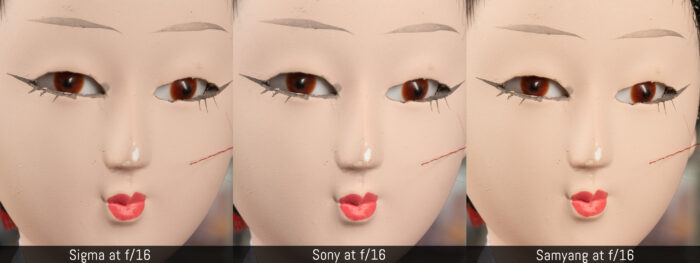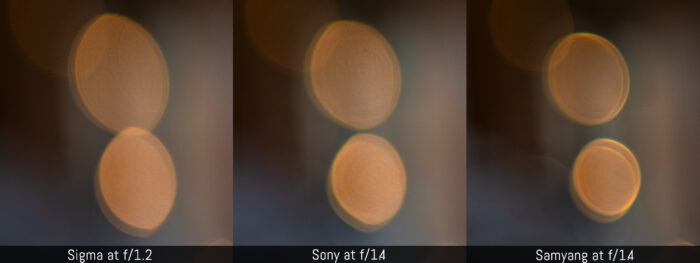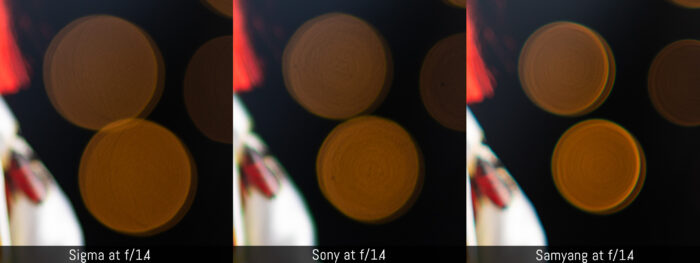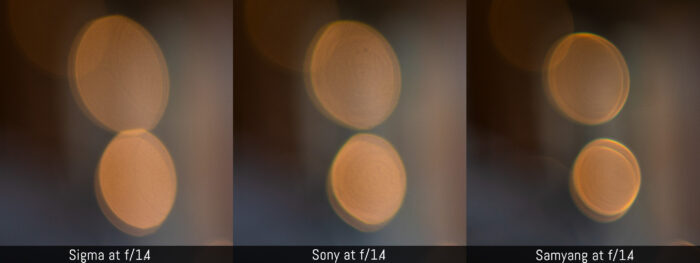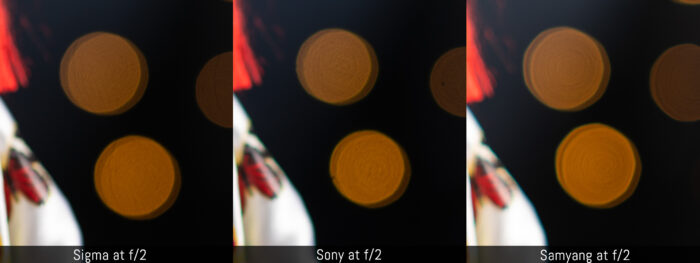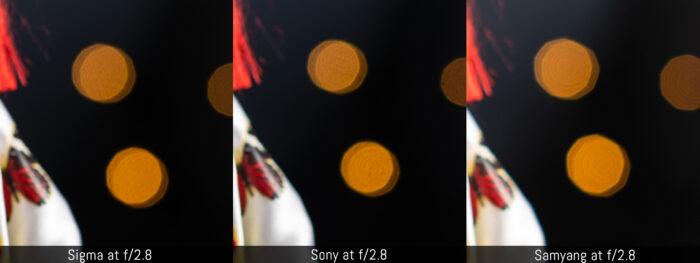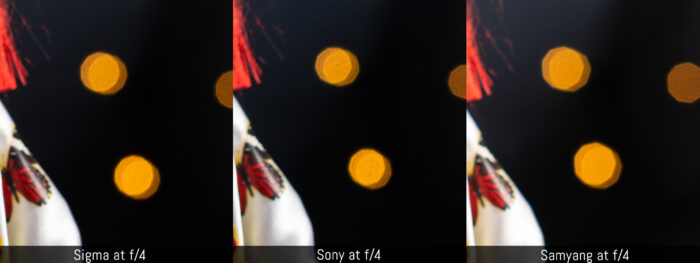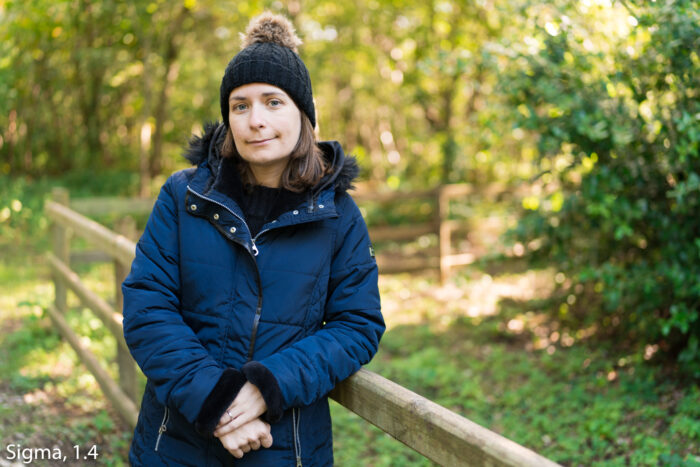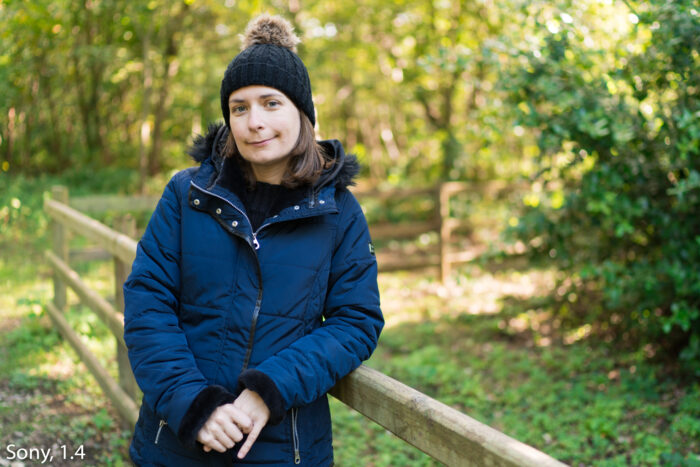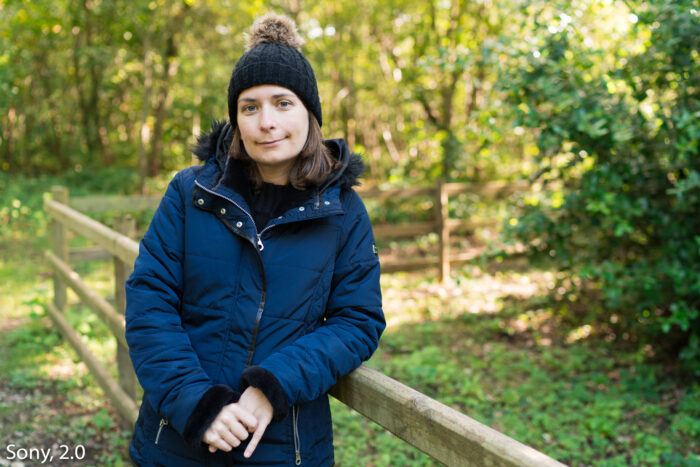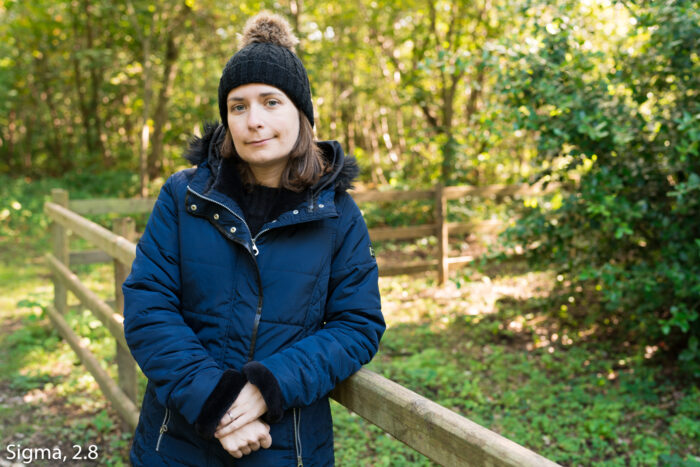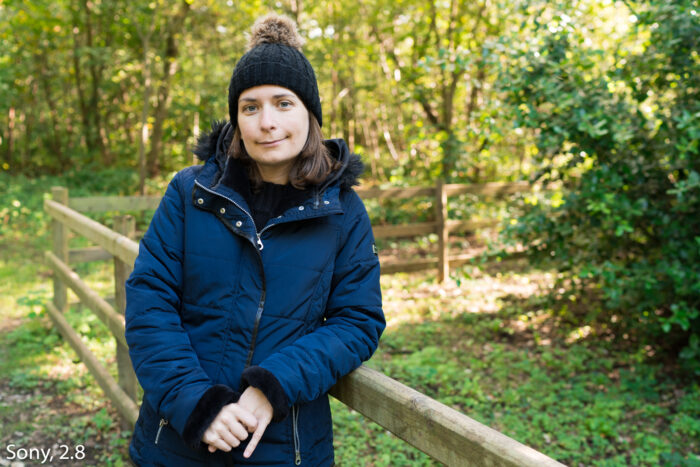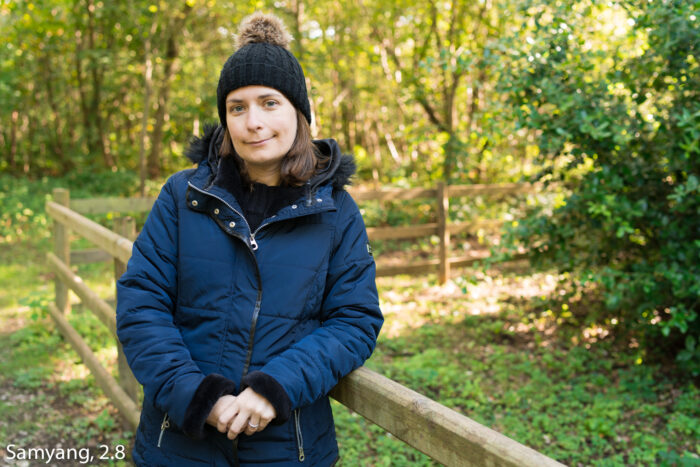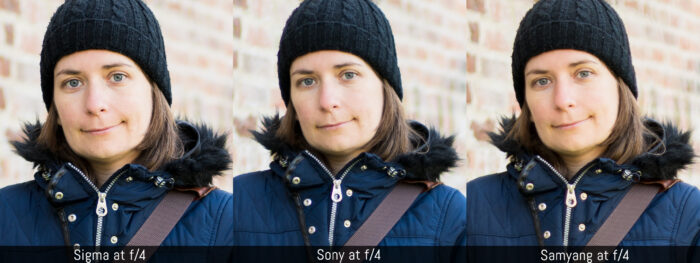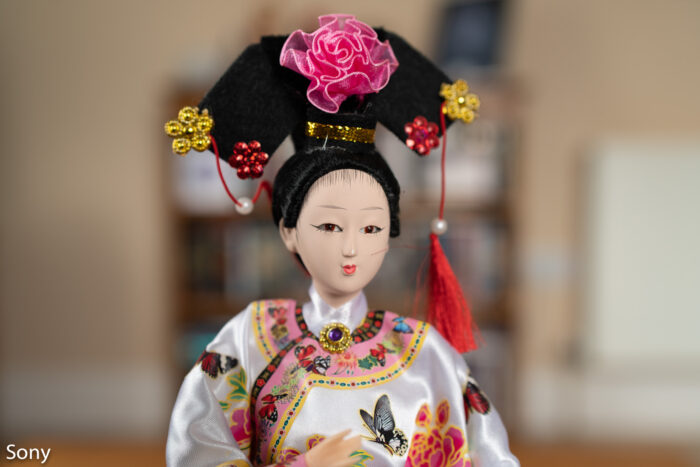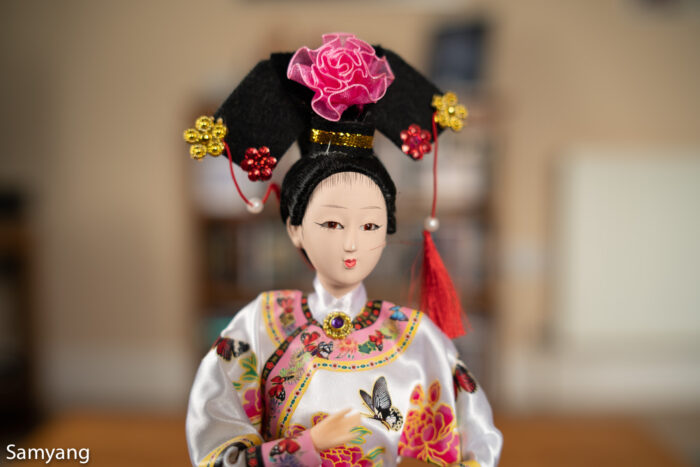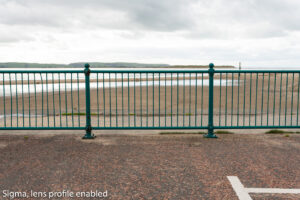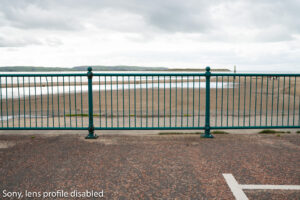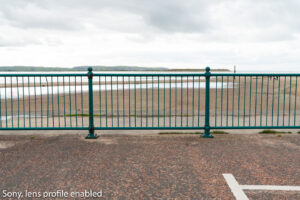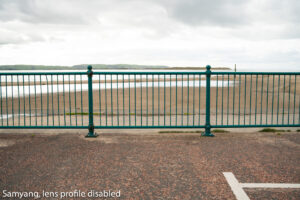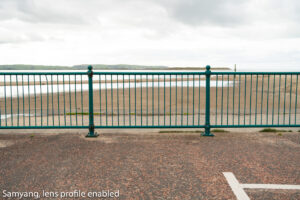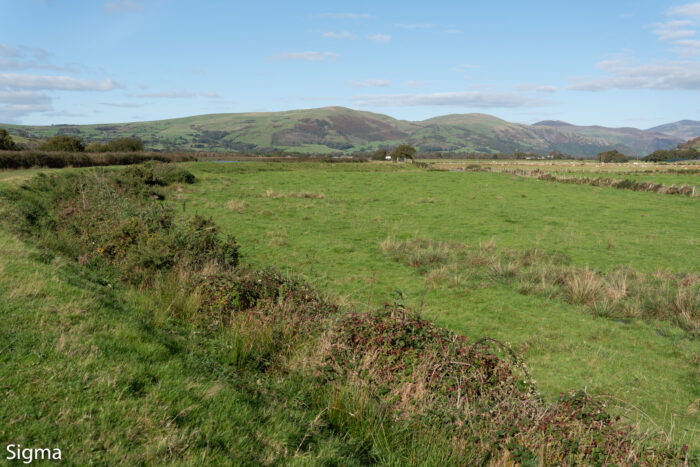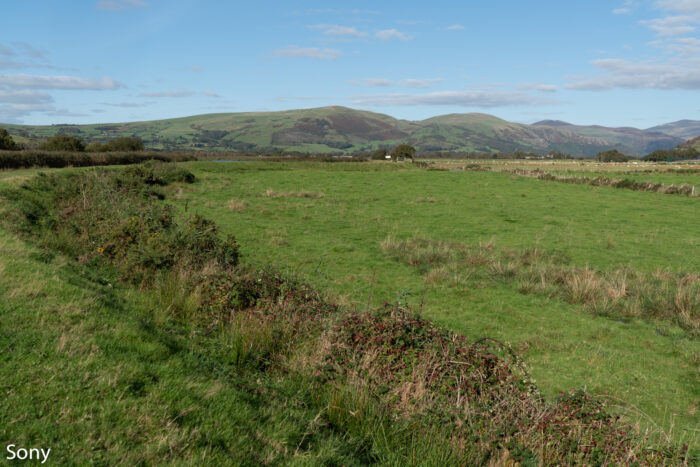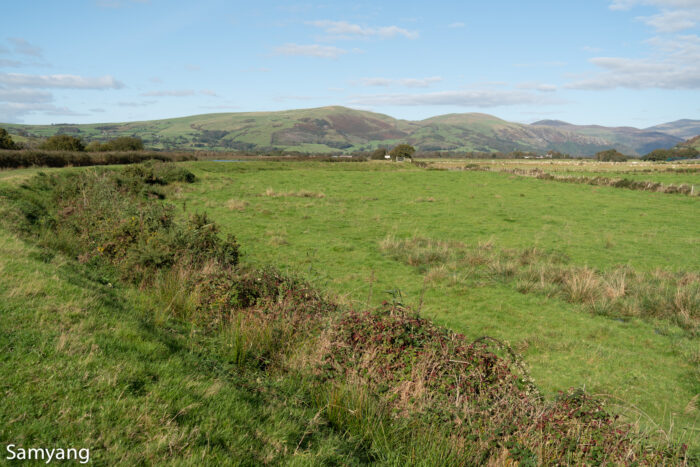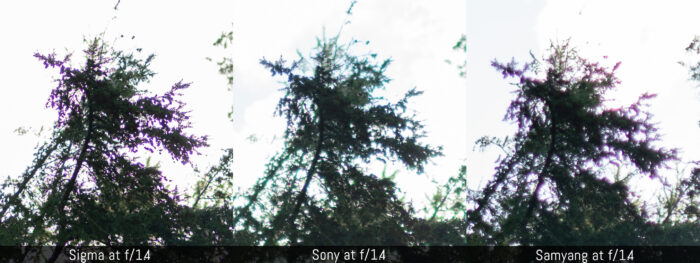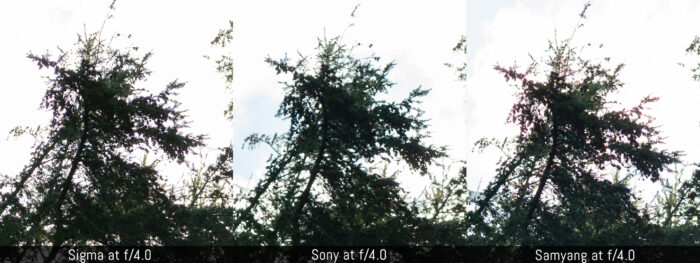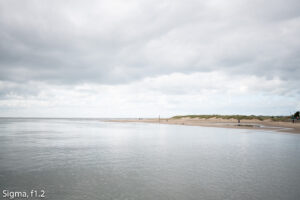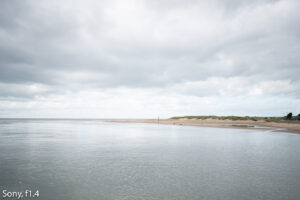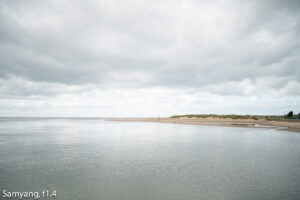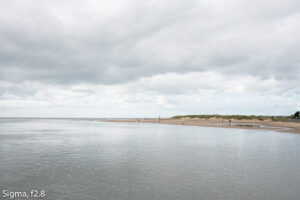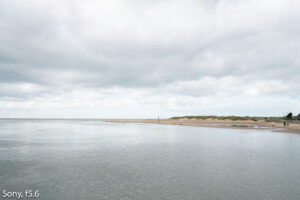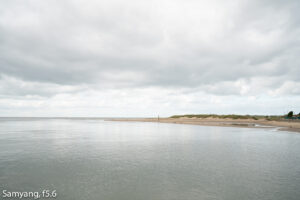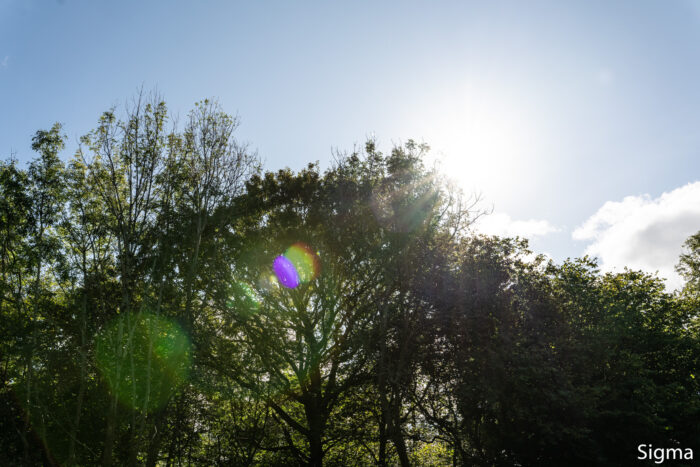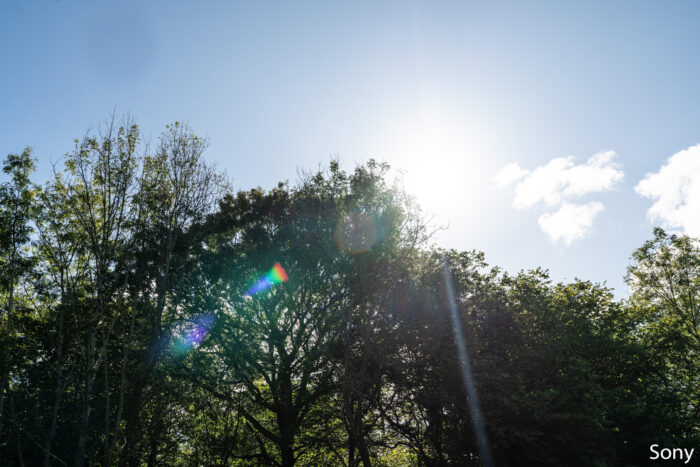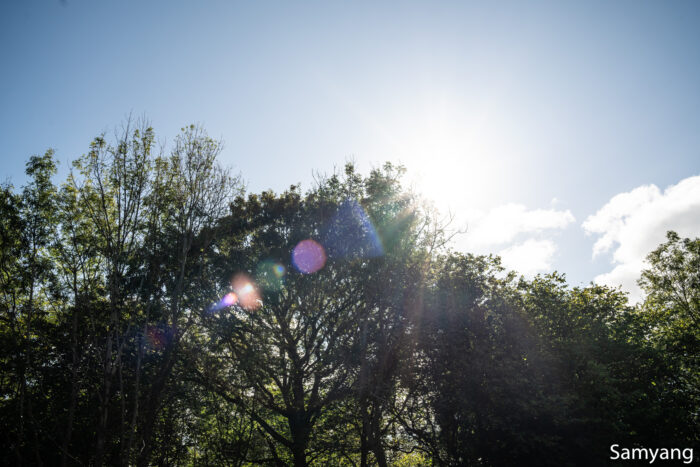The full-frame E-mount series has grown exponentially in the last couple of years. This is mainly thanks to a massive effort from Sony but also the result of third-party manufacturers investing in the system.
Today, photographers have a lot of choice when it comes to lenses. Take the classic 35mm focal length: there are no fewer than 10 products designed specifically for the E-mount. In this article, we take a look at three of the most interesting options if you need autofocus and a fast aperture.
Ethics statement: We were loaned the Sigma and Samyang lenses for a few weeks. We rented the Sony lens to make the comparison, and we tested it previously when it came out in 2015. We were not asked to write anything about these products, nor were we provided with any sort of compensation. Within the article, there are affiliate links. If you buy something after clicking the link, we will receive a small commission. To know more about our ethics, you can visit our full disclosure page. Thank you!
Table of Contents
1. Main Specifications
2. Design and Ease of Use
3. Optical Quality: Sharpness
4. Optical Quality: Bokeh and Portrait Examples
5. Optical Quality: Field of View and Distortion
6. Optical Quality: Colours and Chromatic Aberration
7. Optical Quality: Vignetting and Flare
8. Auto and Manual Focus
9. Conclusion
Main Specifications
| Sigma 35mm f1.2 DG DN Art | Sony FE 35mm f1.4 ZA | Samyang AF 35mm f1.4 FE | |
| Mount | E-mount | E-mount | E-mount |
| Format coverage | 35mm | 35mm | 35mm |
| Focal length | 35mm | 35mm | 35mm |
| Weather sealing | Yes | Yes | No |
| Maximum aperture | 1.2 | 1.4 | 1.4 |
| Minimum aperture | 16 | 16 | 16 |
| Aperture blades | 11 | 9 | 9 |
| Angle of view | 63.4˚ | 63˚ | 65.5˚ |
| Closest focus distance | 30cm | 30cm | 30cm |
| Lens config. | 17 elements 12 groups | 12 elements 8 groups | 11 elements 9 groups |
| Special elements | 3 SLD 3 aspherical | 1 AA 2 aspherical | 2 HR 2 aspherical |
| Lens coating | Yes | Yes (Zeiss T*) | Yes (UMC) |
| Max. image magn. | 0.2x | 0.18x | 0.17x |
| O.S.S. | No | No | No |
| Size | ø87.8 136.2mm | ø78.5 112mm | ø75.9 115mm |
| Filter diameter | ø82mm | ø72mm | ø67mm |
| Weight | 1090g | 630g | 645g |
Design and Ease of Use
Looking at the three lenses side by side, the Sigma 35mm stands out due to its larger size. It is much heavier than the other two lenses whereas the Sony and the Samyang have a very similar weight and dimensions.
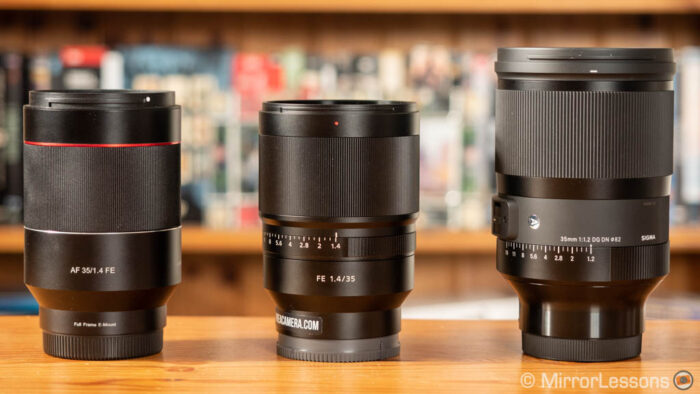
The three lenses feature a metal build. The Sigma feels like the most robust when handled, but the Sony gives you a very good feedback too. The Samyang feels a bit cheaper when taking into account things like the plastic caps and hood, but it’s not a deal breaker. However keep in mind that it is the only one that doesn’t offer weather-sealing amongst the trio.
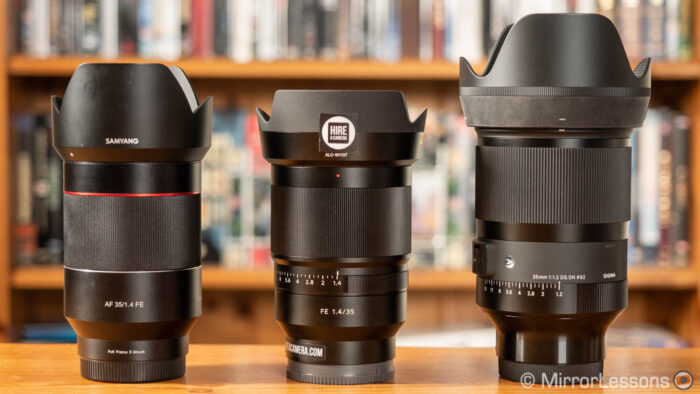
The Sigma and the Sony come with an aperture ring that can be de-clicked with the dedicated switch, a useful option for video recording. The switch on the Zeiss lens is a bit sensitive. I found myself triggering it inadvertently when taking the lens out of my backpack. As for the aperture rings themselves, both are nice to operate but I found the Sigma ring slightly more precise.
Only the Sigma has a switch to change between auto and manual focus, as well as a customisable button. The Samyang on the other hand doesn’t have any sorts of controls on the barrel, except for the focus ring. And speaking of the focus ring, the Sigma has a ribbed rubber cover that offers a better tactile feel.
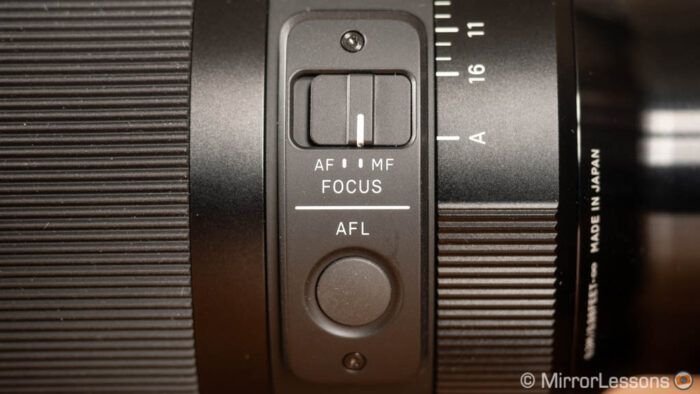
The Samyang has the smallest filter thread: 67mm. The Sony takes 72mm filters and the Sigma takes 82mm.
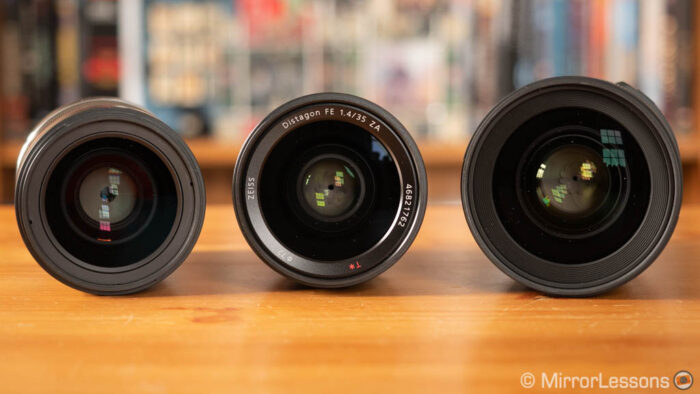
Each lens comes with a hood to stop light from entering from the sides. The Sigma version has an unlock button and is partly covered in rubber. I don’t find this part really necessary, as rubber is a magnet for dust. The Sony/Zeiss hood is partly covered by metal and attaches well to the lens. The Samyang one is entirely made of plastic and as said earlier, it feels a bit cheaper and scratches more easily.
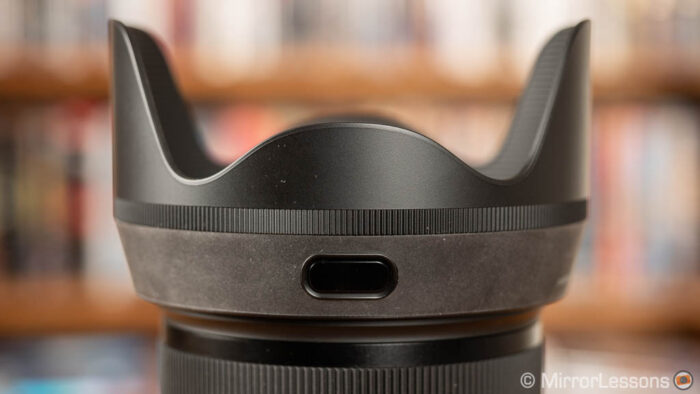
The Sony lens has the Zeiss logo on the barrel because it has been developed with the help of the German brand. It carries the Distagon name which is one of Zeiss’ well known optical designs.
Optical Quality: Sharpness
There are many things to talk about when it comes to the quality of a lens. Let’s begin with sharpness, which is a much-loved topic. We’ve tested the lenses multiple times to evaluate the performance at long distance, short distance and in the corners.
Centre sharpness
At their respective fastest apertures, the Sigma comes out on top as the sharpest of the three at f/1.2. The Sony/Zeiss performance is close at f/1.4. The Samyang appears a bit softer with less contrast and has bit of haloing around contours.
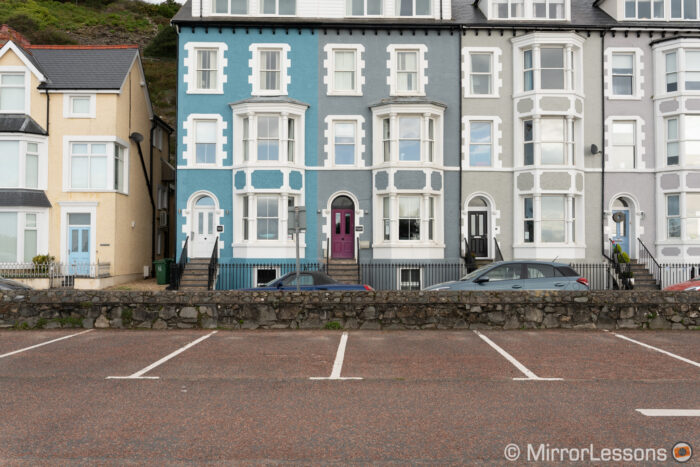
With the three lenses set at f/1.4, the Sigma strengthens its advantage. Lines and details are clearer and it has a bit more contrast in comparison to the Zeiss lens.
At f/2, the Sigma retains its advantage but it is less pronounced because the other two lenses, the Samyang especially, become sharper.
At f/2.8, the Samyang catches up with the Sigma whereas the Zeiss stays a fraction behind. By f/4, the three lenses level up. This aperture value represents their peak performance along with f/5.6.
From f/8 we start to see a decrease in sharpness up to f/16, with the Zeiss lens being the worst out of the three. The difference is very mild though and the performance remains very good from the three lenses. At f/16 diffraction becomes more apparent.
Corner sharpness
In the corners, the Sigma and Samyang show excellent performance at their respective fastest apertures of 1.2 and 1.4. The Sony lens is a bit softer. The Sigma improves ever so slightly at 1.4.
At f/2, the Sigma and Samyang improve unlike the Zeiss which suffers from focus shift and looks worse than the 1.4 image.
The Sigma and Samyang continue to improve at f/2.8, f/4 and f/5.6 and it’s really a very close battle between the two as they show such good performance.
The Zeiss catches up at f/8 with very similar levels of sharpness to the other two. Once again diffraction worsens the results at f/16.
Minimum Focus Distance Sharpness
Each lens has a minimum focus distance of 30cm. Once again, the Sigma is sharper at f1.2 and f1.4 in comparison to the Zeiss and Samyang lenses.

The advantage remains at f2, whereas at f2.8 the Sony lens and the Samyang lens close the gap. The Sigma is still a bit sharper than the other two, while the Zeiss is a bit better than the Samyang.
The advantage of the Sigma remains all the way down to the smaller apertures. From f/5.6, the Samyang delivers very similar results to the Sony/Zeiss. From f/11, the Sony becomes the softest out of the three.
Optical Quality: Bokeh and Portrait Examples
A 35mm lens is an interesting focal length for environmental portraits and the fast aperture can help separate a person from the background despite the wide angle of view. It is also useful for focusing on details and isolating them from their surroundings.
Here we talk about another well-loved characteristic (and of photography in general): bokeh, or the quality of the out of focus area.
Bokeh
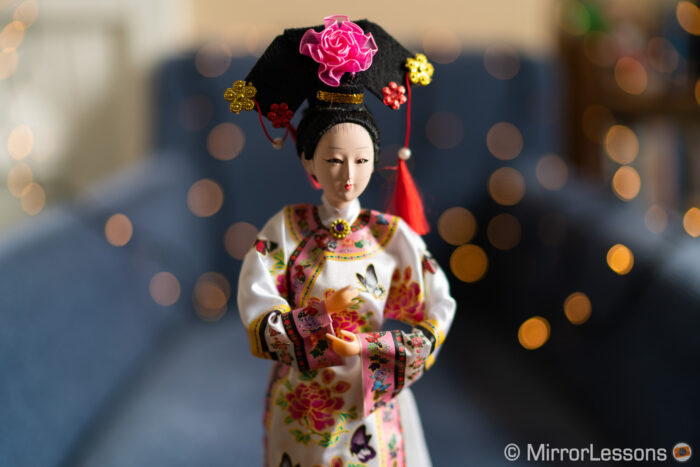
The Sigma displays larger bokeh circles at f1.2 which is expected given the half stop advantage. They assume an oval “cat’s eye” shape towards the edges, but remain very clean, with a plain and smooth texture. Subtle onion rings are visible but they aren’t any cause for concern.
At 1.4 the roundness of the balls improves on the Sigma. The Zeiss displays less oval shapes at 1.4 but has more onion rings. The Samyang bokeh circles are smoother inside but have a distinctive light border.
Af f2, the Sigma and Zeiss display beautiful rounded circles, whereas on the Samyang we start to see the shape of the iris blade.
At f2.8 and f4, they all start to display the shape of the aperture but once again it is more pronounced on the Samyang.
Subject separation and portrait examples
The Sigma has the advantage of a faster aperture and shallower depth of field. The separation between subject and background is very pleasant. The Sony does a good job as well and both lenses have a creamy and pleasant bokeh that doesn’t distract you. Because of the different bokeh characteristics, the Samyang displays a somewhat busier background but it also gives the lens a more distinctive character.
If we look at another example with a full body shot, the difference is less perceptible between the Sigma and the Sony. The former gives you slightly more shallow depth of field but the latter does equally well when it comes to subject separation. The Samyang separates a bit less than the other two but has a more distinctive look because of the higher contrast by default as well as more severe vignetting (which I decreased in this example).
The Sigma has one advantage over all the others however and that is sharpness once again. See the crops below to see how well preserved the details are on the subject in comparison to the other two photos.
Optical Quality: Field of View and Distortion
Despite all three being labelled 35mm lenses, the Sigma has a slightly narrower field of view in comparison to the other two. The Zeiss is the widest but the difference with the Samyang is almost imperceptible.
Note that in the three images below, the lens profile was deactivated. When applied, the field of view becomes slightly narrower on the three lenses but the same difference remains.
Another difference concerns the maximum magnification at the minimum focus distance. The Sigma has the highest magnification factor whereas the Samyang angle of view is wider than the other two lenses.
The three lenses exhibit some barrel distortion: the Sigma is the one that suffers more from it whereas the Sony/Zeiss is the least affected. When the lens profile is applied, the distortion becomes well contained.
Note however that there isn’t a dedicated lens profile for the Samyang. The closest I could get was the manual focus version, and I applied some extra adjustments to make it look good.
Optical Quality: Colours and Chromatic Aberration
In terms of colour rendering, the Sony has cooler tints whereas the Samyang is the one that gives a warmer image. The Sony version is a bit darker too, which means that the light transmission capability is below the other two products (about 0.4Ev).
In the following crop, you can observe the difference in colours better. I’ve levelled up the exposure to make it easier to observe. Of course, keep in mind that these colour shifts are easy to correct when processing the RAW files.
The Sigma displays a bit of purple fringing at the fastest aperture which disappears between f/4 and f/5.6. It is easy to remove it in post with the CA correction tool.
The Zeiss has less purple fringing but a bit of longitudinal chromatic aberration. It is almost gone by 2.8 and 4.
The Samyang displays purple fringing that only disappears from 5.6 / 8.
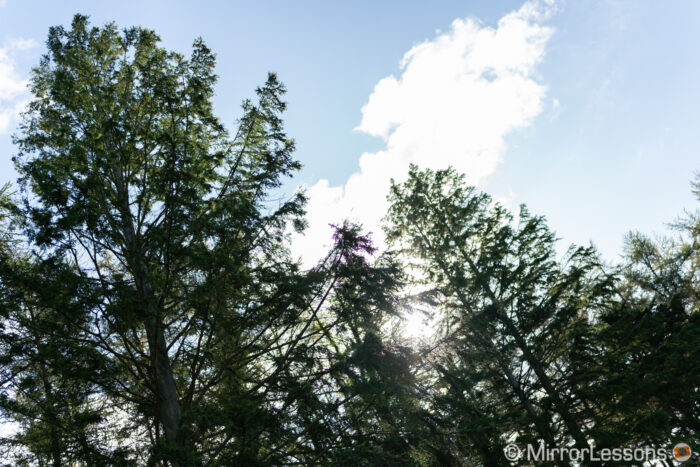
Optical Quality: Vignetting and Flare
The Samyang shows more vignetting at the fastest aperture. The Sigma manages to mitigate most of it from f/2.8 already, whereas it takes further stopping down on the other two lenses to get rid of it. If you apply the lens profiles, vignetting becomes a non-issue but I would say that even without it, it is easy to correct in post.
The three lenses can display flare when a strong source of light is the frame, such as the sun in the sky. Ghost flares of different sizes and colours will appear in images taken with the Sigma and Samyang lens, whereas flare on the Sony is a bit smaller but shows a distinctive triangular rainbow flare.
If you like sun star flares, the most capable out of the three lenses is the Samyang. The Sigma is not as pleasant whereas the Zeiss doesn’t really shine when it comes to this specific characteristic.
Auto and Manual Focus
The Sigma is a bit noisy when working in stills mode, but gets quieter in movie mode.
The Zeiss is the quietest out of the three. In S-AF you can hear the aperture blades opening and closing, but in C-AF and video mode it is very silent.
The Samyang is the loudest in all modes. It is not very loud but you can hear the noise quite clearly.
As for the autofocus speed, the Zeiss is the fastest followed closely by the Sigma. The Samyang is somewhat slow, something you can notice with Eye AF as well.
The three lenses have a fly-by-wire focus ring but the experience when manual focusing is quite different.
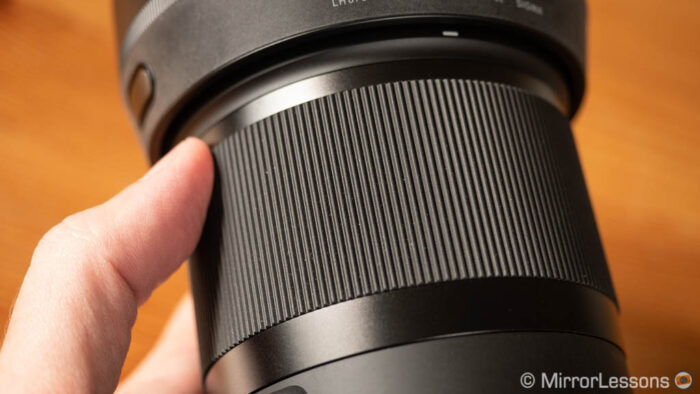
The Sigma is the best for fine tuning your focus point manually, especially when using the magnification mode. Unlike the other two, turning the ring slower or faster doesn’t affect the distance travelled. This means that it takes longer to go from infinity to the shortest focus distance, but you also have more rotation available to nail the focus precisely.
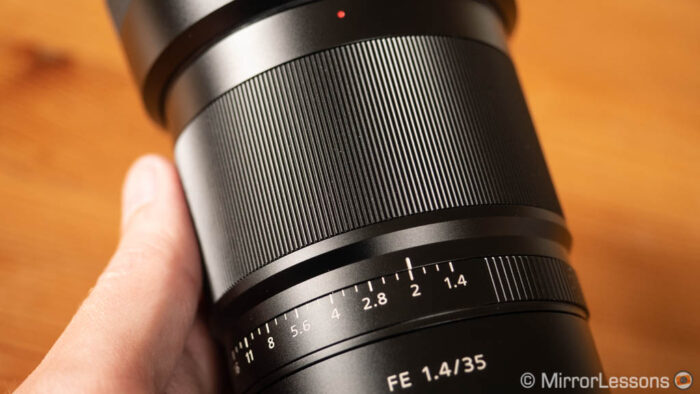
The Zeiss gives you good feedback and is precise to use, although not as pleasant as the Sigma lens. The Samyang is the worst. The fly-by-wire electronic mechanism is too erratic and it works in steps rather than giving a smooth change. It can be annoying when trying to focus precisely on a point of your image.

Finally, the Samyang shows a bit more focus breathing than the other two lenses.
Conclusion
To my eyes, the Sigma 35mm 1.2 Art comes out on top, and not by a small margin. The sharpness it is capable of delivering from 1.2 is impressive. The subject separation and the quality of the bokeh are exceptional, the colour rendering is excellent and it handles other things such as distortion and vignetting very well. There is a bit of purple fringing to deal with at the fastest aperture (in backlit situations mainly), but it is easy to eliminate.
The manual focus experience is the best out of the three lenses thanks to the precise focus ring. The price is very competitive given its characteristics, so really the only negative aspect I can mention is the size. The Sigma is a large and heavy lens, but it is a small price to pay in comparison to what this 35mm delivers in terms of quality.
The Sony / Zeiss Distagon don’t reach the same level of optical quality as the Art lens, but I do like its bokeh and how it separates the subject from the background. It is not as sharp but it remains a very good lens overall. It has the fastest and quieter AF motor but unfortunately it is the most expensive out of the three products here.
The Samyang is the most affordable option, so I wouldn’t be surprised if it ends up being a best-seller. From an optical point of view, I find it to be the one with the most distinctive character when it comes to the bokeh, although it may not be to everyone’s taste. (I personally find it a bit distracting at times.)
I wish Samyang would make the effort to add some controls to the lens barrel (AF/MF switch, but also an aperture ring like the other two lenses would be nice). The focus ring is terrible and made my sharpness tests more challenging than they should have been. The AF motor is the noisiest for stills and video, but it focuses fast enough.
Choose the Sigma 35mm 1.2 Art for your Sony E-mount camera if:
- you want the very best optical quality
- you plan to shoot a lot at the fastest aperture
- you like to work in manual focus
Choose the Sony 35mm 1.4 ZA for your Sony E-mount camera if:
- you want the fastest and quietest AF motor
- you want a small but high quality lens to carry around
Choose the Samyang 35mm 1.4 AF for your Sony E-mount camera if:
- you want to spend less
- you like the unique bokeh rendering
Reminder: the links below are affiliate links. If you decided to buy something after clicking the link, we will receive a small commission.
Check price of the Sigma 35mm 1.2 Art on:
Amazon | Amazon UK | B&H Photo | eBay
Check price of the Sony 35mm 1.4 ZA on:
Amazon | Amazon UK | B&H Photo | eBay
Check price of the Samyang 35mm 1.4 AF on:
Amazon | Amazon UK | B&H Photo | eBay
Second-hand E-mount lenses on:
MPB US | MPB UK
So, now it’s your turn. Which one would you choose and why?
Additional 35mm lens comparisons:

